2021 Ducati Monster and Monster+
When we gaze through rose tinted glasses at the last quarter century of motorcycle culture and design, it’d be fair to say the Ducati Monster, in all its previous forms, would feature highly on the greatest hits list.
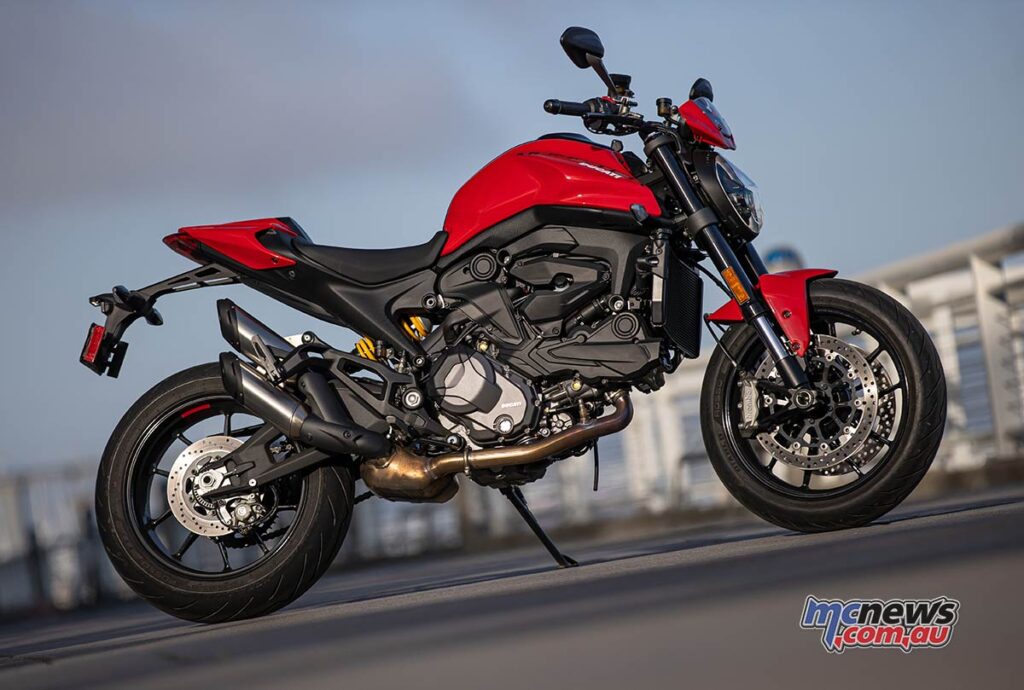
The Monster is one of the few motorcycles to leap from the murky depths of motorcycle subculture to one the wider population knows and admires. Argentinian Miguel Galluzzi, now firm property of Ducati’s arch rival Piaggio, is the man credited with creating the Monster, his early sketches leading to a simplistic machine that debuted at the 1992 Intermot Show in Cologne and has gone onto sell over 350,000 units worldwide.
This makes it arguably the most important motorcycle – in financial terms – Ducati has ever created, and to alter from this hallowed design amounts to sacrilege for many of the world’s Ducatisti.
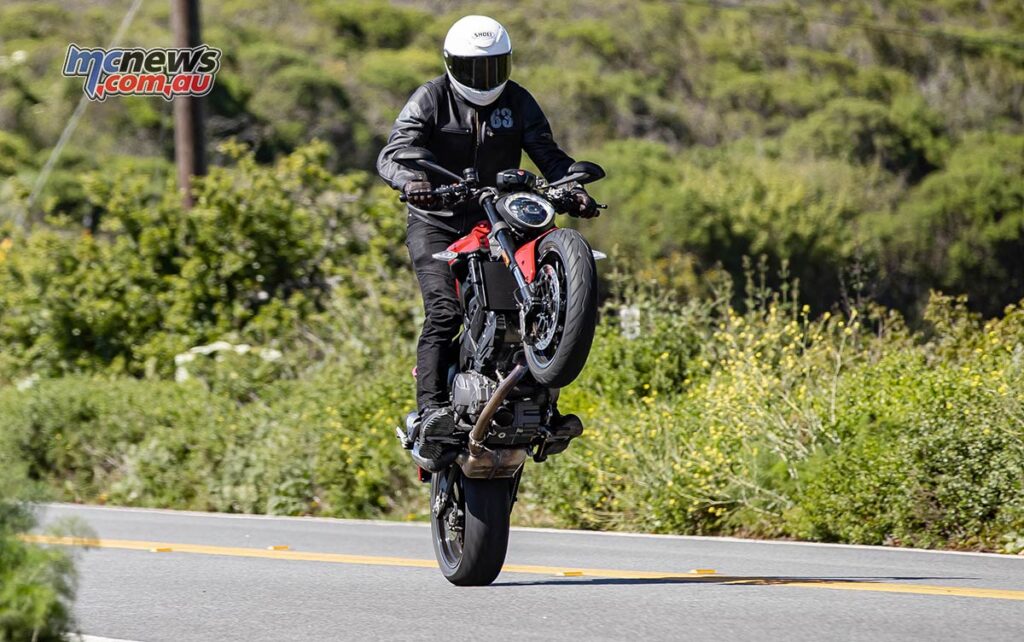
This may be so, but Ducati needs to move with the times and that means the Monster must as well. For 2021, the Ducati Monster has been completely revamped. A new 937 cc motor, taken and altered from the Hypermotard and Supersport, sits as a stressed member inside a chassis that no longer consists of tubular steel trellis sections but a Front Frame layout, similar to what we got on the first Panigale V4 superbike of 2018.
Much of the internet rage regarding the Monster has been leveled is at the stylist’s pen. Compared to pretty much every other Monster that came before it, the new generation looks like it has sold the house and blown it all with the plastic surgeon. If you squint, you can see traces of Yamaha’s MT-09 and KTM’s 890 Duke R in the aesthetic, which is about as far removed from conventional Monster thinking as you can get.
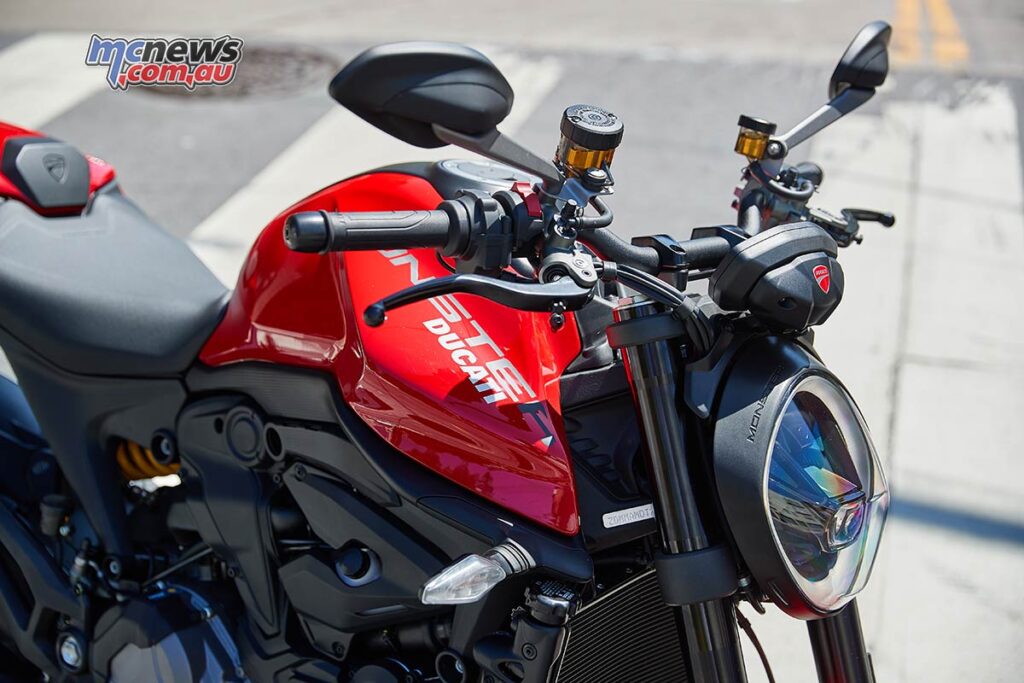
The new Monster starts from $18,200 ride-away, and the up-spec’ $18,850 ride-away Monster + that comes with a small accessory screen and passenger seat cover, is thinner and sportier than its predecessor, with the tank taller and skinnier where it meets the rider’s seat.
That point there hints at what Ducati is really doing with the Monster—they’re after newbies, big time. Skinnier mid-sections, while sexy on both humans and motorcycles, make it easier for you to touch your feet down if you’re a little on the shorter side, which is always a concern when you’re new to the game.
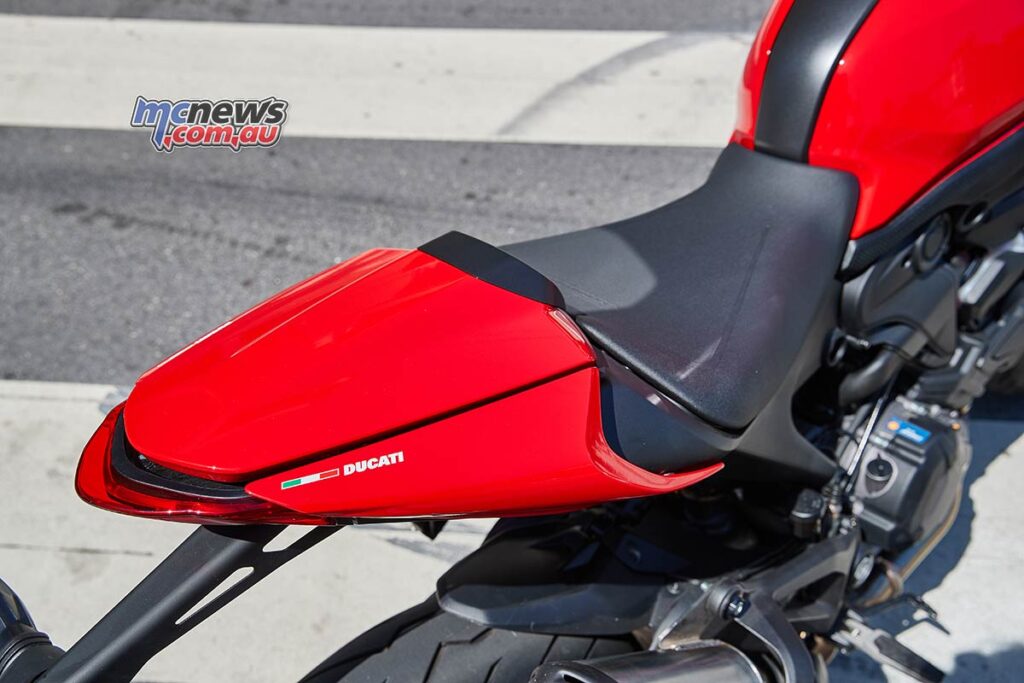
New riders are also going to love the increased lock-to-lock steering angle. Ducati’s given you 11-degrees more to play with, which will make the Monster easier to handle in places like tight carparks and when slicing through traffic.
Although the motor has been donated from the Hypermotard, the Ducati engineers have upped the compression ratio to 13.3:1 and are claiming 111 horsepower at 9250 rpm. Torque is registered at 93 Nm at 6500 rpm. Those are handy little numbers but the big difference is in torque, where this new model outshines the old Monster 821 spectacularly from 4000-8000 rpm, maintaining a near 27 Nm advantage.
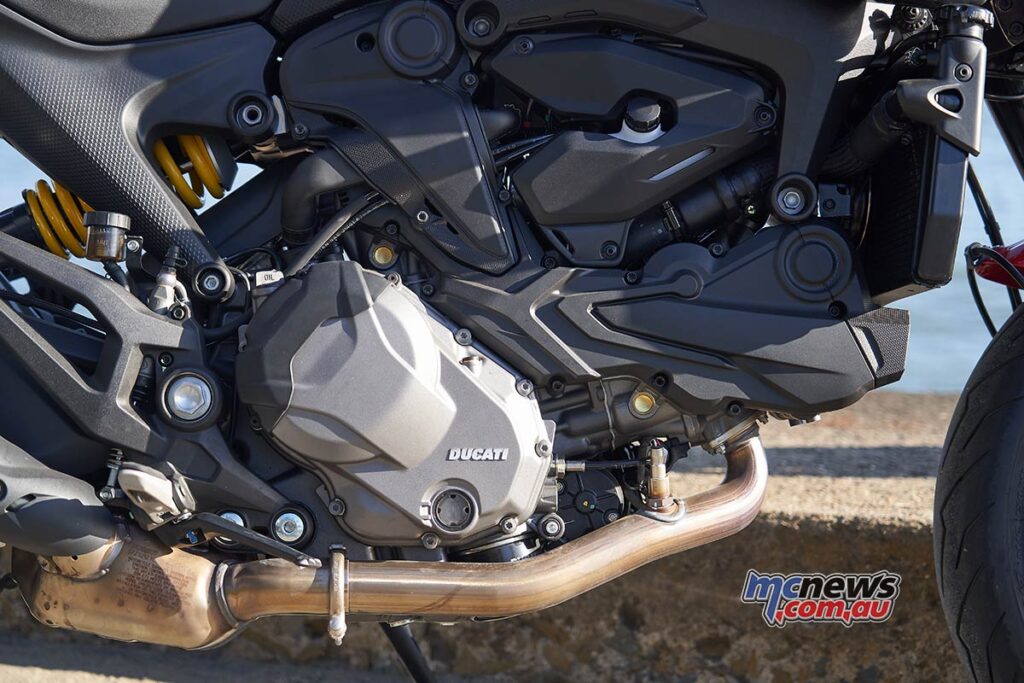
Ducati hasn’t suffered too much at the hands of the dreaded Euro5 emissions regulations, which, if you take a cynical motorcycle journalist’s point of view, were designed purely to annihilate the mid-range punch of every motorcycle sold around the world. But, seriously, Ducati has handled this burden rather well. There’s a dip in torque between 3-4000 rpm, but it’s restored quickly and without too harsh a hit when it does so.
It’s commonplace for pretty much every Ducati sold now to be laden with electronics and the Monster is no different. There’s three riding modes in Sport, Touring and Urban, all three of which you can go into and adjust the individual parameters.
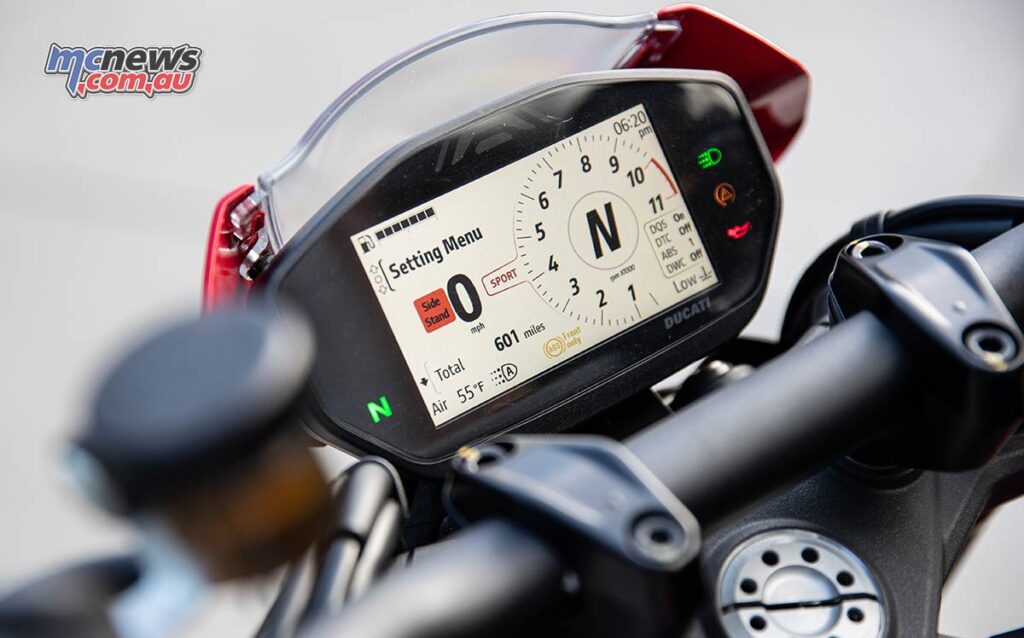
The Monster’s IMU mitigates the eight stage traction control, three stage Cornering ABS, and four stage wheelie control (which you can thankfully turn off), and it also dictates the cut time for the quick shifter. If you’re on the side of the tyre, the cut is faster than when you’re bolt upright to reduce the chance of the chassis getting all out of shape.
Unfortunately, there’s no cruise control, which for a bike with all those other fangled electronic bits is disappointing. There’s even launch control on the Monster. Not really sure why you need that. I’ll trade that any day for cruise control.
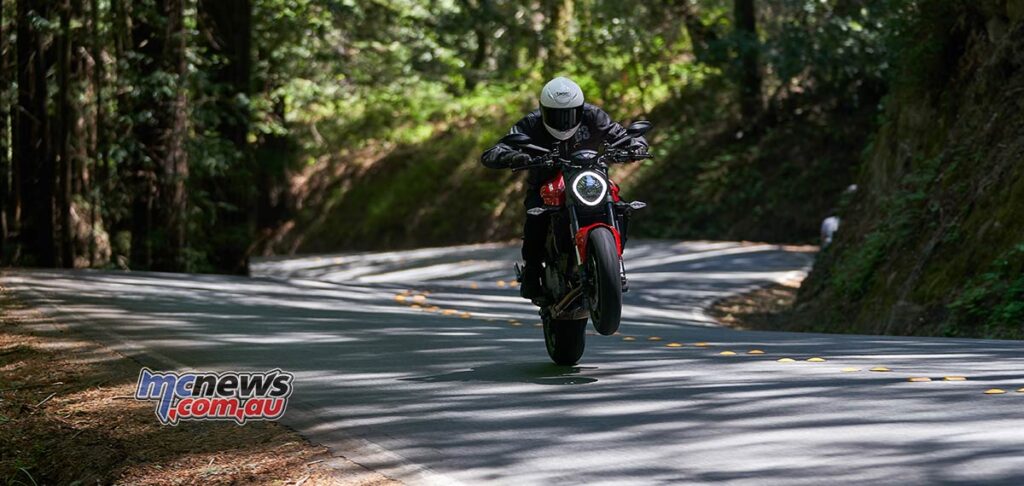
One cool point is when you change something on the bike, like traction control, the dash will flash up with a graphic of the bike with the rear wheel in red. Playing with wheelie control? The front wheel gets illuminated. Even a simpleton like me can figure it out.
On the suspension front, you could be forgiven for being disappointed if all you saw was the spec sheet. The 43 mm KYB fork is un-adjustable, while the monoshock only has preload adjustability, however, the ride is deceptively impressive for such low-rent suspension.
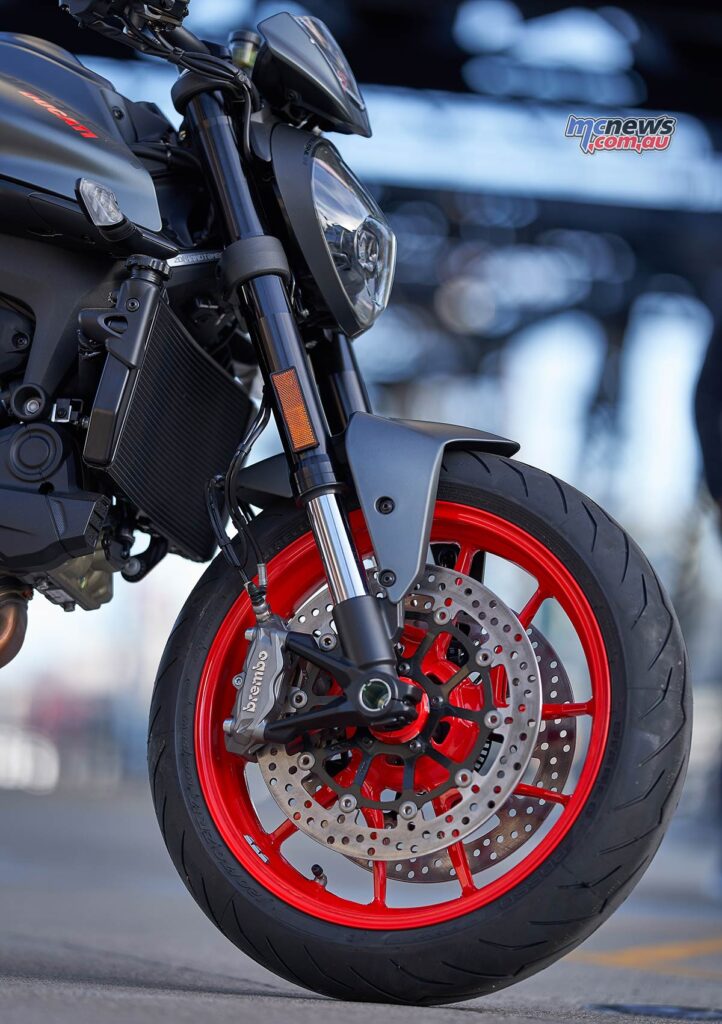
Sitting on the Monster at standstill with my 86 kg frame (without riding gear), the Monster felt springy but in practice the suspension behaved rather nicely. It’s a soft ride, and if you’re north of 95 kg it will for sure be undersprung for you.
That softness gives a comfortable ride, and stood up to medium speed thrashing over some rather average roads we encountered on the test south of San Francisco (the area we rode reminded me very much of the Black Spur just out of Melbourne).
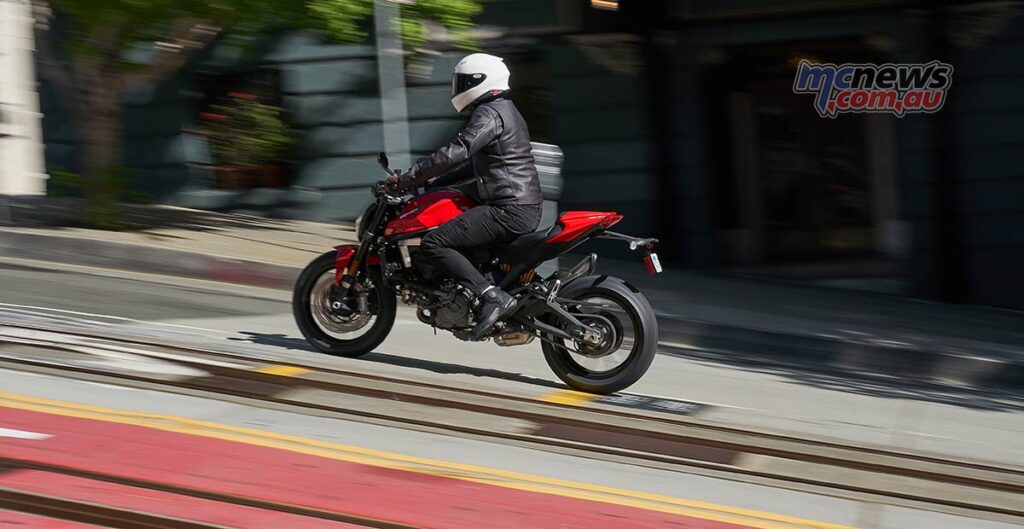
Part of why the suspension, basic as it is, works is because there’s less weight to suspend. In creating the 2021 Monster, Ducati has lopped 18 kg of mass off compared to the outgoing Monster 821. When you consider most manufacturers struggle to get even a few kegs off with a new model while having to contend with the extra weight posed by the Euro5 catalytic convertors, that’s a mighty impressive feat from Bologna.
The result is the Monster is far more nimble than it was, dancing from corner-to-corner with only so much as a look and a slight tug of the bars. This, combined with the extra pep from the 931 cc motor (and the switching off of the wheelie control) makes for some, err, spirited front tyre conservation on the new Monster.
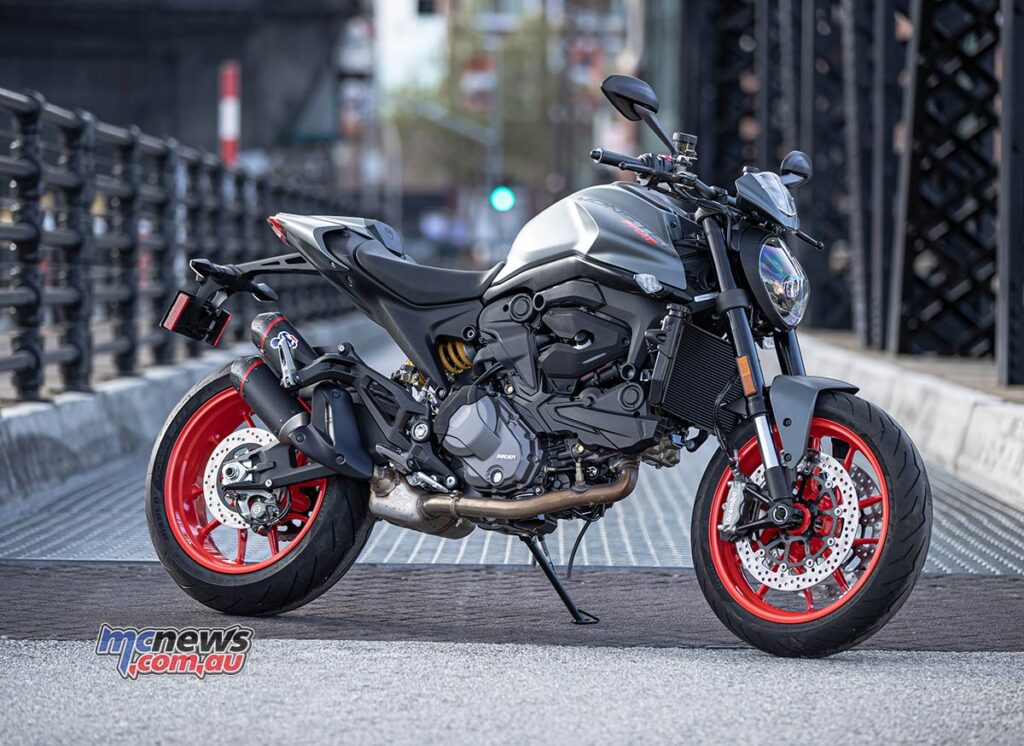
That’s the crux of the 2021 Ducati Monster: it doesn’t look or feel anything like it did before. While some will lament the loss of the steel trellis frame or the fat headlight or the tank that was about twice as wide as it is now, there’s no denying this is a bloody fun bike to ride.
When you look at the competition, it’s probably third overall behind the MT-09 and the KTM 890 Duke/Duke R in outright performance, which is fine because those two are a bit harder edged than the Monster, which will appeal to new riders more than the other two.
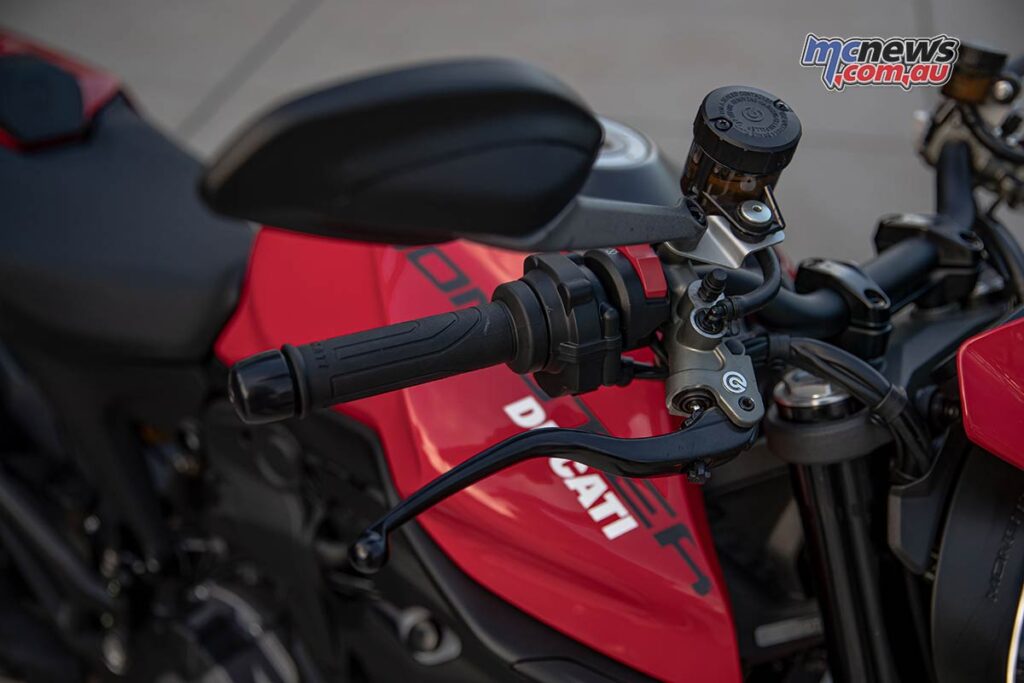
To this end, there’s multiple seat and suspension heights you can get with the Monster. The engineers have pulled the handlebar 66 mm closer to the rider, and placed the footpegs 10 mm lower and 35 mm further back, all helping you maintain a straighter back and taking weight of your wrists. It’s therefore not as painful over a long distance, although the Monster still isn’t (in my opinion) a great option for long range touring – especially given the lack of cruise control.
Taking a leaf out of the Ducati Scrambler book, the Monster gets a ton of interchangeable bodywork bits that give the rider a touch of customising ability without the need for an angle grinder.
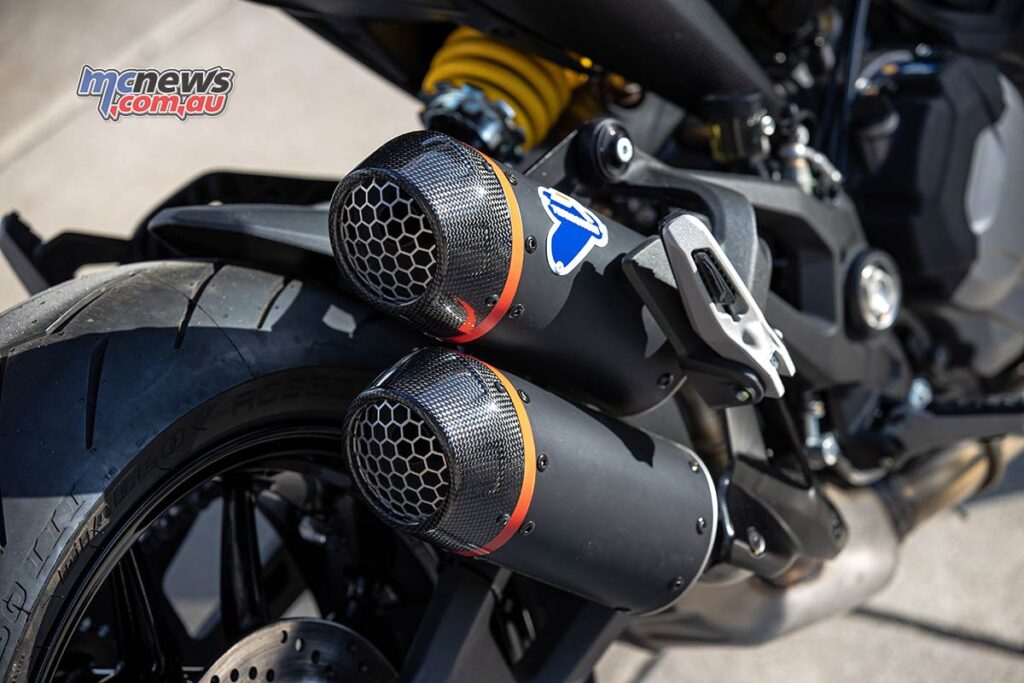
The bodywork covering the tank clips off and there’s six different patterns you can replace them with, or you can just go nuts with a spray can safe in the knowledge that if it all goes bad (which it probably will), you’re not up for the cost of a new fuel tank – just the cover.
On top of that you’ve got the usual Termignoni mufflers, carbon guards, little belly pans that look super cool, skinnier mirrors, bar-ends, tank and seat bags, heated grips and alarms, and lots more in the Ducati parts catalogue.
The new Monster is certainly a case of ‘out with the old, in with the new’, and despite the internet rage surrounding the design, I can tell you from the hot-seat Ducati has done an excellent job. And I personally love the look of the Daytime Running Light (DRL), the sharper seat section and the redesigned tank.
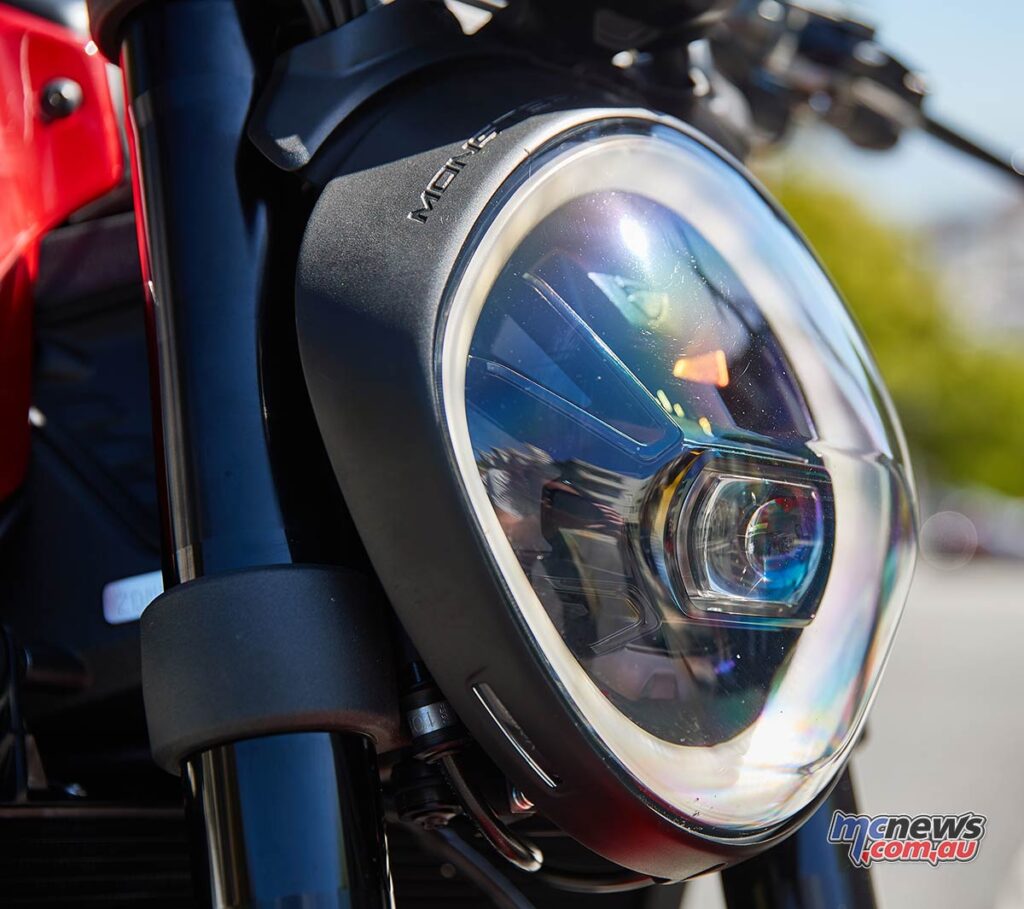
There’s a few things like exposed wires around the admittedly very plastically-looking engine and a couple of finishing touches here and there that detract from the quality of the motorcycle, but overall, the Monster is a big improvement compared to the outgoing 821, and that’s exactly the point of bringing out a new model.
2021 Ducati Monster and Monster+ Specifications
Source: MCNews.com.au
